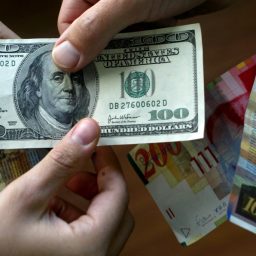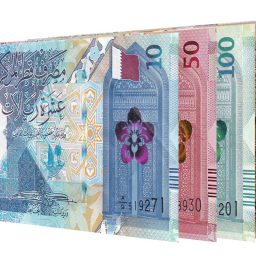Saudi Arabia, the largest oil producer in the Gulf

Saudi Arabia is one of the most important oil producer and the first exporter of petroleum liquids in the world; its economy is founded on oil, petroleum-based fuel and liquids, indeed the top exports of Saudi Arabia, in economic terms are:
➢ Crude Petroleum ($100B)
➢ Refined Petroleum ($18.4B)
➢ Ethylene Polymers ($10.5B)
➢ Propylene Polymers ($5.84B)
➢ Ethers ($4.92B)
For these reasons, Saudi Arabia is the 25th largest export economy in the world and the 29th most complex economy according to the Economic Complexity Index (ECI).
Saudi Arabia economy remains dependent on petroleum, and it is also “the largest consumer of petroleum in the Middle East, with oil used both in the heavily subsidised transportation sector as well as for power generation, cooling, desalinisation and among other uses”2 as reported by EIA.
As well as for internal use, every day Saudi Arabia, as I said previously, exported abroad, in particular concern oil it must meet the demands of many other countries after energy deals.
Indeed Saudi Arabia has made many oil joint ventures with many different countries, the most important in percentage terms are these:
➢ United States of America – 19%
➢ China – 18%
➢ South Korea – 15%
➢ India – 13%
➢ France – 3,7%
➢ Singapore – 3,4%
➢ Thailand – 3,3%
➢ Spain – 2,3%
➢ Italy – 1,9%
➢ Philippines – 1,5%
➢ Pakistan – 1,4%
To ensure these agreements, Saudi Arabia must refine 2 million per day of oil, and it “has built significant spare capacity over the last five years to help protect the market from unmanageable price spikes. The combined slowdown in growth and rise in supply (including from U.S. tight oil) means that it could be in a position to hold more spare capacity relative to overall market size than it has in a long time. Such a position forces Saudi leaders to think about how to manage ample, rather than limited, spare capacity in global oil market”4.
Oil agreement between Saudi Arabia and China, the biggest oil consumer
The world’s energy balance changed a lot in the last few decades in many terms: demand increase and its move eastwards.
This change meant an increasingly greater role of energy both in international politics and in the geopolitical, giving priority in the various political agendas and in addiction in all events and campaigns to raise public awareness about the remaining resources.
The two countries which determined this were India and China.
China in 1990 needed only 8% of the global energy consumption, while the biggest in the world United States of America need 24%, now the two countries are equal at about 18%, but in the
future more precisely in 2035 is expected that China dominates the energy needs market at 24% overcoming the U.S.A. that would need 16%. For both countries energy will play a primary role5.
In 2006 China became the biggest oil imported of the world to develop its economy, in 2009 China consumed 8.3 million barrel per day of oil, while it produced only 4 million barrel per day (Mbpd). The figures have been steadily increasing, indeed in 2011 China oil demand was 9.6 Mbpd while its imports were rise to 5.6% Mbpd6.
China is dependent on the Middle East to meet this energy demand, in particular from Saudi Arabia; furthermore it is concerned to decrease the influence of the United States in the region.
Aramco operates in China with subsidiary Aramco-China, whose main office is in Beijing, the Saudi giant oil exports to China since the early nineties and became the first provider in the country since 2006, maintaining this record until 2016. In April 2016, Moscow overtook Saudi Arabia as China’s largest supplier reaching 4.81 tons of oil a month.
The increase of 52.4 per cent compared to 2015 has lowered the Saudi supplies by 20 per cent. The trend continued throughout 2016 thanks to strong demand of Chinese independent refiners known as “teapots”. In 2016 Russian supplies have reached 1.05 million barrels of oil per day7, while Saudi Arabia has stopped at 1.02 million, with a limited increase of 0.9 per cent compared to 2015.8
China plays a strategic role in the Saudi company and demonstrates it the offices of Aramco in three major Chinese cities: Beijing, Shanghai and Xiamen.
Saudi Arabia is trying to exploit its geographical gap with Russia launching a series of close partnerships with Chinese state energy giants (this is also in anticipation of the launch Initial Public Offering (IPO) for sale on international markets 5% of Saudi Aramco).
As Reuters as reported February 13 of the current year “State oil giant Saudi Aramco signed a contract with Chinese refiner North Huajin Chemical Industries Group Corporation (NORINCO) to crude supply in 2017”9, this company “operates a crude oil refinery in Panjin in Liaoning province with a processing capacity of 6 MMtpy and a petrochemical plant in Panjin that produces 700,000 types of ethylene”10 about an article published on the website “Hydrocarbon Processing”.
At this time Aramco’s crude exports to China are nearly 15 per cent of its total imports, and as I said before Russia has overcome Saudi Arabia as the top crude supplier of China, but the kingdom wants to be the main partner again in the next two years. To do that Saudi Arabia is planning and signing strategic plans for the future, on the most important it has been signed during the state visit of the King of Saudi Arabia Salman bin Abdulaziz al-Saud with Xi Jinping in Beijing March 16, 2017.
The Aramco’s strategic planning in China consist in $65 billion worth of bilateral agreements and memorandums of understanding on production capacity and investment cooperation11; these agreements will play a decisive role in geopolitics of energy in the coming years because the Chinese energy consumption is and will be the highest in the world.
By: Michele Brunori
















